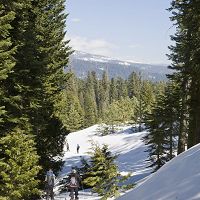Whitenack et al., 2010
Development of an integrated information system for Critical Zone Observatory data.
Whitenack, T , Williams, M W, Tarboton, D G, Zaslavsky, I, Durcik, M, Lucas, R G, Dow, C, Meng, X, Bills, B, Leon, M, Yang, C, Arnold, M, Aufdenkampe, A K, Schreuders, K, Alvarez, O. (2010)
Fall Meeting, American Geophysical Union. December 2010. Abstract IN31B-1289 Cross-CZO National
-
National, STAFF
-
Boulder, INVESTIGATOR
-
National, INVESTIGATOR, STAFF
-
National, INVESTIGATOR, STAFF
-
Catalina-Jemez, STAFF
-
Sierra, GRAD STUDENT
-
Christina, INVESTIGATOR, STAFF
-
Sierra, STAFF
-
Luquillo, STAFF
-
Boulder, STAFF
-
Christina, STAFF
-
Christina, INVESTIGATOR
Abstract
The Critical Zone Observatory (CZO) program is a collaborative effort to advance scientific understanding of multi-scale environmental interactions in the critical zone from bedrock to the atmospheric boundary layer. CZO sites use a mix of established and novel data collection methods to examine hydrogeochemical and physical processes in the critical zone. Publishing, analyzing and archiving these data in a consistent and integrated manner across all CZO sites is challenging due to the inherent heterogeneity in data collection and processing techniques.
A goal of the CZO program is an integrated data management model across all CZO sites that can be used to discover, browse, retrieve and unambiguously interpret CZO data. This paper describes the ongoing development of such a system by a team comprising data managers from each CZO site and cyberinfrastructure researchers. The design follows a uniform, standards-based approach that draws on experience and software developed in related NSF supported cyberinfrastructure projects (LTER, CUAHSI HIS, EarthChem, etc.) We describe the information model used (adapted from CUAHSI's observations data model), present a web based mechanism for publishing CZO point observations data, and discuss potential extensions of the publication model to other types of data.
In this system each CZO site maintains its own data management system, and generates human- and computer-readable “display files” that follow an agreed upon format and contain necessary metadata. The display files reside on individual CZO web sites, but are harvested by a centralized CZO application that parses the files, identifying and validating new data and related metadata, ultimately loading the new data on to a CZO-modified version of the CUAHSI Observations Data Model. The ingested data values are then published using web services that follow the Water Markup Language (WaterML) specification, and can be retrieved and analyzed by WaterML-compatible client applications such as HydroDesktop. The display file format, incorporates information model enhancements such as multiple types of named vertical and horizontal offsets and data loggers collecting information from multiple sampling locations within a single ‘site’. Additionally, the display file provides a tiered approach to publishing environmental data, by allowing data to be published by the individual CZOs but then also integrating these individual data in a larger cross-CZO system. Harvesting these data via a centralized system provides continuity to the data collected across all CZO sites that ultimately facilitates cross-site data exploration and analysis.
Citation
Whitenack, T , Williams, M W, Tarboton, D G, Zaslavsky, I, Durcik, M, Lucas, R G, Dow, C, Meng, X, Bills, B, Leon, M, Yang, C, Arnold, M, Aufdenkampe, A K, Schreuders, K, Alvarez, O. (2010): Development of an integrated information system for Critical Zone Observatory data . Fall Meeting, American Geophysical Union. December 2010. Abstract IN31B-1289.
 This Paper/Book acknowledges NSF CZO grant support.
This Paper/Book acknowledges NSF CZO grant support.
Explore Further











